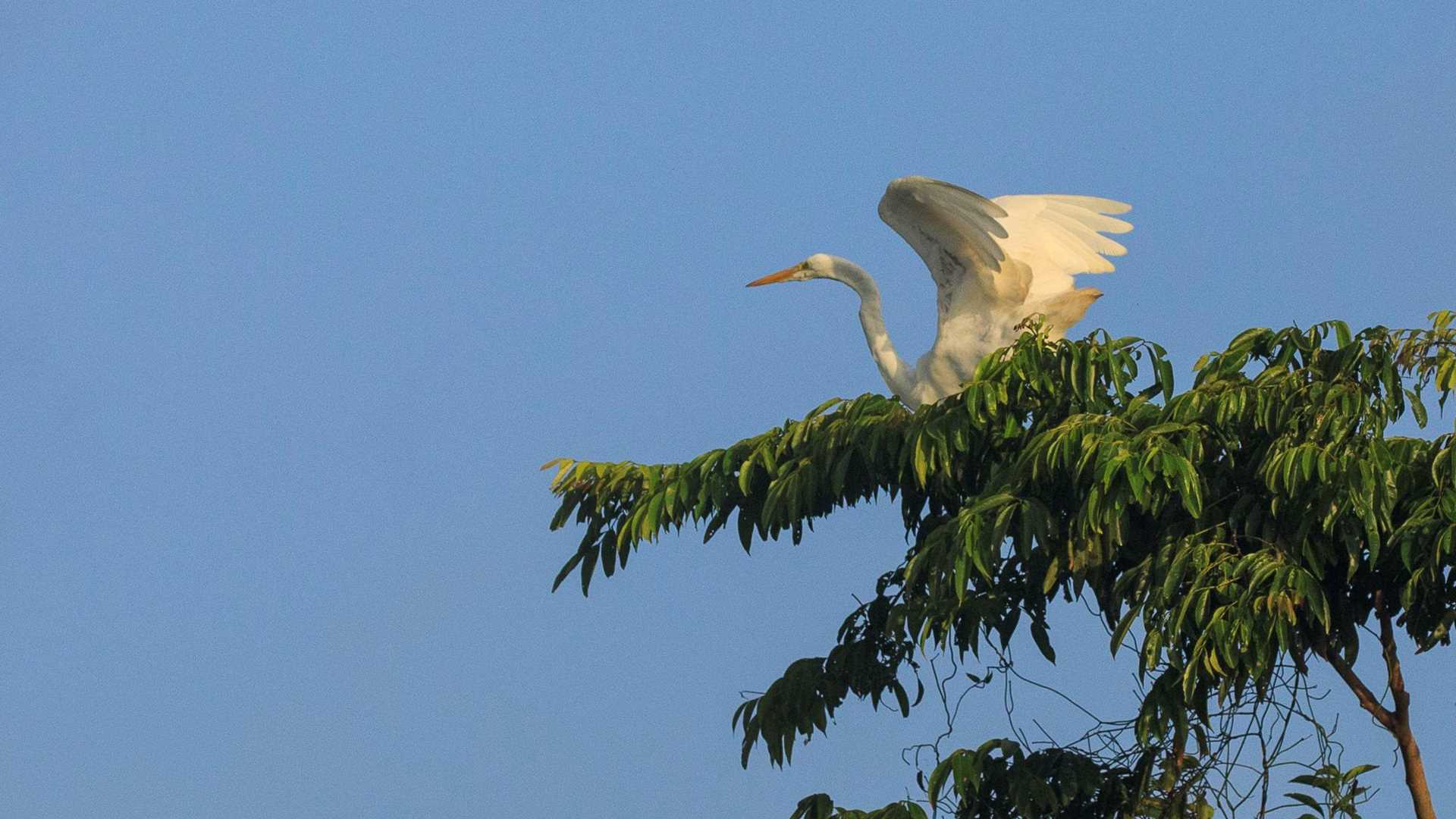Fish Islands, Antarctica
Antarctica and Patagonia: Legendary Ice and Epic Fjords, February 1, 2022

A deep hole in a large iceberg glows with an ethereally saturated blue, like nothing else in nature. The blue color is a result of the absorption of other wavelengths of light in the ice, so the color is always at its best in holes and cracks, where the heart of the berg is revealed. —David Cothran, Naturalist/Certified Photo Instructor
Monkey River, Belize
Wild Belize Escape: Wildlife, Reefs, and Rivers, February 3, 2022

Great egret about to take flight. —Luz Hunter, Cultural Specialist
Sims Island, Antarctica
Epic Antarctica: South Sandwich Islands, South Georgia & the Peninsula, February 3, 2022

Pale morph south polar skuas were abundant on Sims Island, with many Adelie penguins to keep them fed. Here three skuas fight over a penguin wing. —Conor Ryan, Naturalist
Loreto Bay National Park, Baja California
Baja California and the Sea of Cortez: Among the Great Whales, February 4, 2022

The flukes of a blue whale are not all that common. For a blue to lift its tail free of the water it must be either diving very deeply or be an individual that is predisposed to lift its tail above the water. It certainly doesn’t occur all that often but is always a treat to see. —James Hyde, Undersea Specialist
Lake Gatun, Panama
Costa Rica and the Panama Canal, February 5, 2022

We spotted a little troop of Geoffroy’s tamarins, monkeys of the almost endemic Panamanian primates. Tamarins are found in eastern Panama and along the border with Colombia. —Frank Simms, Naturalist
Isla Magdalena, Baja California
Wild Baja Escape: The Whales of Magdalena Bay, February 6, 2022

A young California sea lion adopted National Geographic Sea Bird at the Boca de Soledad in Magdalena Bay. —Linda M. Burback, Naturalist/Certified Photo Instructor
San Cristobal Island, Galápagos
Galápagos aboard National Geographic Endeavour II, February 6, 2022

Galápagos sea lions were one of the day’s highlights. We encountered many of the sea lions during our morning visit as well as during our afternoon hike. In the picture, a young sea lion observes us as we walk along the shore. —Salvador Cazar, Naturalist
Pourquoi-Pas Island, Antarctica
Antarctica and Patagonia: Legendary Ice and Epic Fjords, February 7, 2022

While a parent keeps a watchful eye, a skua chick braves the wind with a walk around its stony home. —Ezra Siegel, Naturalist
Gorda Banks, Baja California
Baja California and the Sea of Cortez: Among the Great Whales, February 8, 2022

Humpback whale breaching near Gorda Banks, Baja California Sur, Mexico. —Carlos Navarro, Undersea Specialist
Punta Pitt, Galápagos
Wild Galápagos Escape, February 8, 2022

Early in the morning, National Geographic Islander arrived at Punta Pitt, the most eastern point in the archipelago. After breakfast, we went for a hike that brought us to one of the most beautiful places on the island—home of the red-footed boobies, the only species of boobies that we had not seen yet. —Omar Adrian, Naturalist
Cabo Pulmo, Baja California
Baja California and the Sea of Cortez: Among the Great Whales, February 9, 2022

Sunset reflecting on the bridge windows of National Geographic Venture. —Kelly M. Coursey Gray, Naturalist
Coiba National Park, Costa Rica
Costa Rica and the Panama Canal, February 9, 2022

Hawksbill turtles are indicator species in the coral reef. —Cristian Moreno, Undersea Specialist




